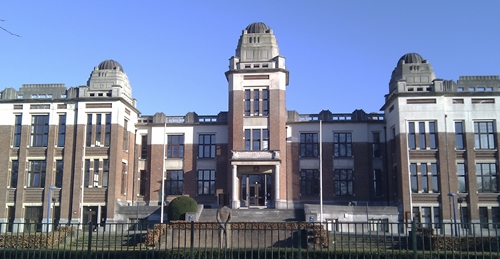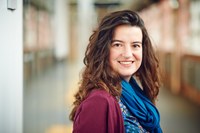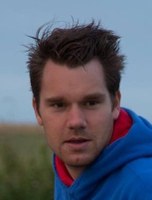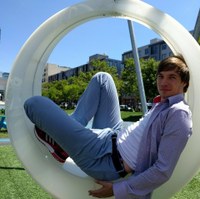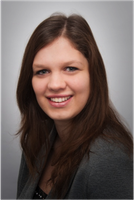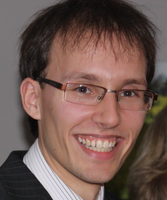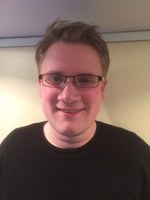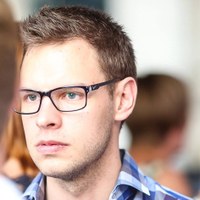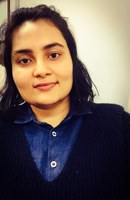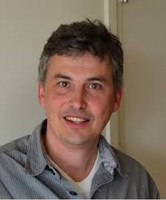Spring Meeting WSC 2017
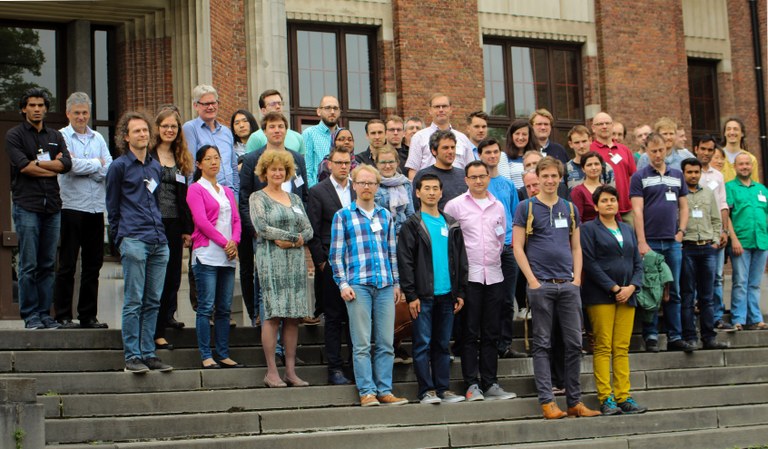
Participants Spring Meeting 2017
Friday May 19-th, 2017, the Werkgemeenschap Scientific Computing organized, together with the research group Computational Mathematics (CMA) of the University of Antwerp its annual spring meeting. This year it took place at the Campus Middelheim in Antwerp. A mix of young and senior researchers were invited to present their research.
Participation (including lunch) was free of charge.
Pictures
Pictures of the 2017 meeting can be found here.
We are very happy to announce that also the PhDays 2017, a special weekend for all PhD students in Scientific Computing from the Dutch and Flemish universities, was held from May 19 to 21 in de Hoge Rielen in Kasterlee (close to Antwerpen). For PhD students a perfect chance to combine the Spring Meeting of the WSC with the PhDays. You can find more information on the website.
Location
|
The Middelheimcampus of the University of Antwerp will be the place to be. Department Wiskunde-Informatica Gebouw A, Lokaal A.143 Middelheimlaan 1 B-2020 Antwerpen-Wilrijk |
Campus Middelheim
 |
|
Train - Tram - Bus
Antwerpen-Berchem station
- bus 21 (Rooseveltplaats-Middelheim-Neerland): stops at Berchem-Station, get off at Middelheimlaan (or Lindendreef),
- bus 32 (Rooseveltplaats-Edegem): stops at Antwerpen-Centraal Station and Berchem-Station, get off at Floralienlaan.
Parking
There are parking spaces on Middelheimlaan and around the campus.
Organization
| This spring meeting is organized yearly by the Werkgemeenschap Scientific Computing (WSC), this year in coorporation with the research group Computational Mathematics (CMA) of the University of Antwerp. Organizing comittee: Prof.dr. Annie Cuyt (UAntwerp), Prof.dr. Marnix Van Daele (RU Gent), Prof.dr. Dirk Roose (KU Leuven), Prof.dr.ir. Kees Oosterlee (CWI, TUD), Martine Anholt (CWI, Secretary WSC). Subsidy Financial support for this meeting has been obtained from Centrum Wiskunde & Informatica (CWI). The Werkgemeenschap Scientific Computing is very grateful for that support. |
Program
| 09.00-09.30 hours | Registration, coffee/tea |
| 09.35-10.10 hours | Ann Dooms (VU Brussels) |
|
Exploiting sparsity in digital forensics [abstract] |
|
| 10.10-10.35 hours | Frits de Prenter (TU Eindhoven) |
| Preconditioned iterative solvers for finite cell discretizations [abstract] |
|
| 10.35-11.00 hours | Manuel Baumann (TU Delft) |
| An Efficient Two-level Preconditioner for Multi-Frequency Wave Propagation Problems [abstract] |
|
| 11.00-11.30 hours | Coffee/tea break |
| 11.30-11.55 hours | Verena Schamboeck (University of Amsterdam) |
| Counting of connected components in random temporal networks [abstract] |
|
| 11.55-12.20 hours | Bart de Leeuw (CWI) |
| Shadowing and synchronization for data assimilation [abstract] |
|
| 12.20-12.30 hours | Group picture |
| 12.30-13.30 hours | Lunch |
| 13.30-13.55 hours | Pieterjan Robbe (KU Leuven) |
| Efficient multilevel and multi-index methods in Uncertainty Quantification [abstract] |
|
| 13.55-14.20 hours | Maarten Wyns (University of Antwerp) |
| Adjoint method for the calibration of SLV models [abstract] |
|
| 14.20-14.50 hours | Coffee/tea break |
| 14.50-15.15 hours | Poorvi Shukla (University of Twente) |
| Error analysis for the Space Time Discontinuous Galerkin (DG) Discretisation for the wave equation [abstract] |
|
| 15.15-15.50 hours | Sorin Pop (UH) |
| Non-equilibrium models for flow in porous media [abstract] |
Speakers Spring meeting WSC 2017
|
|
Ann Dooms is professor at the Department of Mathematics (DWIS) of the Vrije Universiteit Brussel (VUB), where she leads the research group Digital Mathematics (DIMA). She received the degree and PhD in Mathematics in 2000 and 2004 respectively, both from the VUB. |
|
|
Frits de Prenter holds a MSc degree (cum laude) in both Mechanical Engineering and Applied Mathematics. In 2015 he started as a PhD student in the Multiscale Engineering and Fluid Dynamics group of Harald van Brummelen at the Eindhoven University of Technology. His research focuses on immersed methods and the artifacts that occur when elements only marginally intersect the problem domain. His project is funded by the NWO under the Fluid & Solid Mechanics program. |
|
|
Manuel Baumann is a PhD student at Delft University of Technology under the supervision of Kees Vuik and Martin van Gijzen. He obtained his BSc in Mathematics at the Technical University of Berlin, and his MSc in Applied Mathematics from KTH Royal Institute of Technology in Stockholm and TU Delft (double degree program). His research focuses on numerical linear algebra and, in particular, preconditioning techniques for the elastic wave equation. http://ta.twi.tudelft.nl/nw/users/mmbaumann/ |
|
|
Verena Schamboeck obtained her Master degree in Technical Physics at the TU Vienna in 2016. Since April 2016 she is a PhD-student in the group Computational Polymer Chemistry at the University of Amsterdam. Her research focuses on the mathematical modeling of the topology of networks in the field of photopolymers. |
|
|
Bart de Leeuw studied mathematics and theoretical physics at Utrecht University. In 2015 he started working on his PhD in the Scientific Computing group at the CWI, under the supervision of Svetlana Dubinkina and Jason Frank. His research focusses on developing shadowing methods for data assimilation. |
|
|
Pieterjan Robbe is a PhD student at KU Leuven, Department of Computer Science, Numerical Analysis and Applied Mathematics division. He is working under the supervision of Stefan Vandewalle and Dirk Nuyens on the topic of efficient uncertainty quantification methods for complex engineering models. He is funded by the Euforia project (www.euforia-web.eu) |
|
|
Maarten Wyns is a PhD student at the Department of Mathematics and Computer Science of the University of Antwerp (Belgium). He obtained his M.Sc. in Financial Mathematics in 2013 at the Vrije Universiteit Brussel. During his young research career, he published several papers on the convergence of state-of-the-art Alternating Direction Implicit (ADI) schemes for the numerical solution of PDEs from financial mathematics. Currently, Maarten is working on numerical (PDE) methods for the calibration of local stochastic volatility models. |
|
|
Poorvi Shukla obtained her MSc degree in Mathematics from the Indian Institute of Technology Delhi. Since 2014 she is a PhD student in the Mathematics of Computational Science (MaCS) group in the University of Twente. The title of the project is ‘Computing Seismic Waves with Minimal Pollution Error ’. She focusses on the development of the Space Time Discontinuous Galerkin (DG) FEM Discretisation for the wave equation. This work is under the supervision of Prof. J.J.W van der Vegt. |
|
|
Iuliu Sorin Pop is Professor of Computational Mathematics at the Hasselt University (Belgium) and the University of Bergen (Norway). His research interest is in the mathematical analysis, numerical simulation and the upscaling of mathematical models for reactive flow and transport in complex media. Recent research themes include nonequilibrium models for subsurface flows, dissolution and precipitation in porous media, or non-isothermal flow and transport in geothermal reservoirs. |
Abstracts
Ann Dooms (VU Brussels)
Exploiting sparsity in digital forensics
The digital revolution pushes the boundaries of current devices and algorithms to efficiently capture, analyze and (securely) communicate massive amounts of digital signals. To address these logistical and computational challenges in handling such high-dimensional data one often relies on transform coding which comes down to finding a basis or frame that provides a sparse or compressible representation for the (class of) signals at hand. In this talk I will elaborate on several applications in digital forensics in which sparsity is the key.
Frits de Prenter (TU Eindhoven)
Preconditioned iterative solvers for finite cell discretizations
When solving PDE’s on complex domains using the finite element method, meshing can be a laborious procedure. In modern practice, creating the mesh can take up the bulk of the manual labor and more than 80% of the total computational effort [1]. Immersed methods like the finite cell method [2] bypass these expensive meshing operations by using a structured mesh that does not need to match but simply encapsulates the domain.
A common pitfall of immersed methods is ill-conditioning, which generally occurs when the system contains elements with small support in the physical domain. This ill-conditioning often precludes the use of iterative solvers, causing people to resort to direct solvers [2, 3, 4]. The computational effort of direct solvers scales differently with the size of the system than the computational effort required for iterative solvers however [5]. As a result, immersed methods that rely on direct solvers are impractical to apply to large problems. In [6] we have analyzed the underlying mechanism of ill-conditioning for the finite cell method. Based on this analysis, we have developed a preconditioner that reduces the condition number to a value similar to that of standard (boundary fitting) finite elements.
This contribution presents the basic principles of the finite cell method, the underlying mechanism of ill-conditioning and the construction of a dedicated preconditioner. An example of an immersed problem with a large number of degrees of freedom that is impractical to solve using a direct solver is shown.
REFERENCES
[1] J.A. Cottrell, T.J.R. Hughes and Y. Bazilevs. Isogeometric Analysis: Toward Integration of CAD and FEA. 1st Edition, Wiley, (2009).
[2] A. Duester, J. Parvizian, Z. Yang and E. Rank. The finite cell method for three-dimensional problems of solid mechanics. Comp. Meth. Appl. Mech. Engng. 197:3768–3782 (2008).
[3] C.V. Verhoosel, G.J. van Zwieten, B. van Rietbergen and R. de Borst. Image-based goaloriented adaptive isogeometric analysis with application to the micro-mechanical modeling of trabecular bone. Comp. Meth. Appl. Mech. Engng. 284:138–164 (2015).
[4] D. Schillinger and M. Ruess. The Finite Cell Method: A Review in the Context of Higher-Order Structural Analysis of CAD and Image-Based Geometric Models. Arch. Comp. Meth. Engng. 22:291–455 (2015).
[5] Y. Saad. Iterative methods for Sparse Linear Systems. 2nd Edition, SIAM, (2003).
[6] F. de Prenter, C.V. Verhoosel, G.J. van Zwieten and E.H. van Brummelen. Condition number analysis and preconditioning of the finite cell method. Comp. Meth. Appl. Mech. Engng. (2016).
Manuel Baumann (TU Delft)
An Efficient Two-level Preconditioner for Multi-Frequency Wave Propagation Problems
We consider wave propagation problems that are modeled in frequency-domain, and that need to be solved simultaneously for multiple frequencies. Therefore, a single shift-and-invert preconditioner at a 'seed' frequency is used. The choice of this seed frequency is crucial for the performance of preconditioned multi-shift GMRES and is closely related to the parameter choice for the complex shifted Laplace preconditioner. Based on a classical GMRES convergence bound, we present an optimal seed parameter that purely depends on the range of
frequencies of the original problem. Moreover, we derive a polynomial preconditioner that is suitable for the multi-shift setting and that can be applied as a second-level preconditioner. The presented choice for the seed parameter coincides with the minimization of the spectral radius for this polynomial preconditioner. Numerical experiments for the (damped) time-harmonic elastic wave equation demonstrate the performance of the new preconditioner in terms of iteration numbers.
Verena Schamboeck (University of Amsterdam)
Counting of connected components in random temporal networks
In the present age, networks play an important role in our daily life, ranging from the Internet, over social networks, collaboration networks and many more. Besides man-made networks and the field of social sciences, networks are ubiquitous in biology, physics and chemistry. The formation of many such networks can be considered as a random process evolving under distinct conditions. In our work we mainly focus on an evolving polymer network, which is formed as a result of photopolymerization of diacrylates.
We developed a novel approach to model such processes by viewing the network as a random graph with directed and undirected edges. The graph is completely defined by the time-dependant trivariate degree distribution, and its global properties, as for instance the component size distribution, are derived from time-dependent local properties of the individual nodes. An important property of evolving networks is the emergence of the ‘giant’ component that scales linearly with the total number of nodes in the network. An analytic criterion for such a phase transition is presented. This criterion utilises only moments of the temporal degree distribution as input.
Bart de Leeuw (CWI)
Shadowing and synchronization for data assimilation
Data assimilation is concerned with the question if and how, given a time series of noisy observations of some chaotic system, the state (and possibly parameters) of this system can be estimated. Here one could for example think of the application of weather forecasting: given noisy observations of the weather in the past, what is the best estimate we can make of the current weather and how does this help us in forecasting future weather? Chaotic systems exhibit sensitive dependence on initial conditions, which make state and parameter estimation non-trivial and, if one intends to do forecasting, also crucially important. I will give a short overview of the data assimilation problem and will describe how the use of shadowing and synchronization can lead to data assimilation algorithms suitable for trajectory estimation over long time intervals. I will illustrate this with examples using the Lorenz attractor model.
Pieterjan Robbe (KU Leuven)
Efficient multilevel and multi-index methods in Uncertainty Quantification
Uncertainty Quantification (UQ) is an interesting and fast-growing research area that develops methods to characterise and minimise the effect of uncertain parameters and inputs in simulations of complex models used in engineering sciences. Areas of application include robust optimisation, risk analysis and sensitivity analysis. A particular challenge is the solution of problems with a high number of uncertainties, for which the Monte Carlo method is the principal workhorse. Recently, an efficient multilevel class of such Monte Carlo algorithms was introduced. Central to these algorithms is the use of a hierarchy of numerical approximations or levels, hence the name Multilevel Monte Carlo (MLMC). The available computational budget is redistributed over these levels, in order to minimize the error on the final result.
A notable extension of the multilevel methodology is the Multi-Index Monte Carlo (MIMC) Method. MIMC generalises the scalar hierarchy of levels to a larger, multi-dimensional hierarchy of indices. In this presentation, we discuss several variants of the multi-index method, illustrated by numerical examples.
Maarten Wyns (University of Antwerp)
Adjoint method for the calibration of SLV models
In contemporary financial mathematics, stochastic local volatility (SLV) models form state-of-the-art models to describe asset price processes. The local component of the SLV model, the so-called leverage function, is defined in a natural way such that the SLV model yields the same fair value for vanilla options as the underlying local volatility (LV) model. Determining this leverage function is, however, a highly non-trivial task. For example, the fair option values defined by the LV model can often not be obtained analytically and have to be approximated, e.g. by numerically solving the corresponding backward PDE.
Consider any given discretization by finite differences of the one-dimensional backward PDE from the LV model and suppose discretization of the two-dimensional backward PDE corresponding with the SLV model is performed by similar finite difference formulas. In this talk we shall propose a calibration technique with the useful property that it determines the leverage function such that both discretizations define exactly the same approximation for the fair value of vanilla options. In this calibration procedure, which involves a two-dimensional PDE problem, alternating direction implicit (ADI) time stepping schemes are used as they are highly efficient in comparison to classical implicit methods. Ample numerical experiments are provided that illustrate the effectiveness of this calibration procedure.
Poorvi Shukla (University of Twente)
Error analysis for the Space Time Discontinuous Galerkin (DG) Discretisation for the wave equation
In this presentation we will discuss a novel Space Time Discontinuous Galerkin (DG) FEM Discretisation for the wave equation with special focus on its error analysis. We first write it as a first order system and modify it further to get a symmetric form which is helpful in obtaining a stability estimate for the wave equation. We also obtain the lower and upper bounds in the DG norm that are suitable to prove the convergence of theSpace Time Discontinuous Galerkin (DG) Finite Element Method.
Sorin Pop (UH)
Non-equilibrium models for flow in porous media
Standard models for flows in porous media assume that quantities like saturation, phase pressure differences, or relative permeability are related by monotone, algebraic relationships. These relationships are determined experimentally, assuming that the involved quantities have reached a local equilibrium. Under such assumptions, the solutions of the resulting mathematical models have properties like stability in various norms, and satisfy the maximum principle. In particular, standard models rule out effects like saturation overshoot or the formation of finger profiles, which have been evidenced experimentally.
Contact
Questions? Please ask: Martine Anholt or call +31 20 592 40 58.

